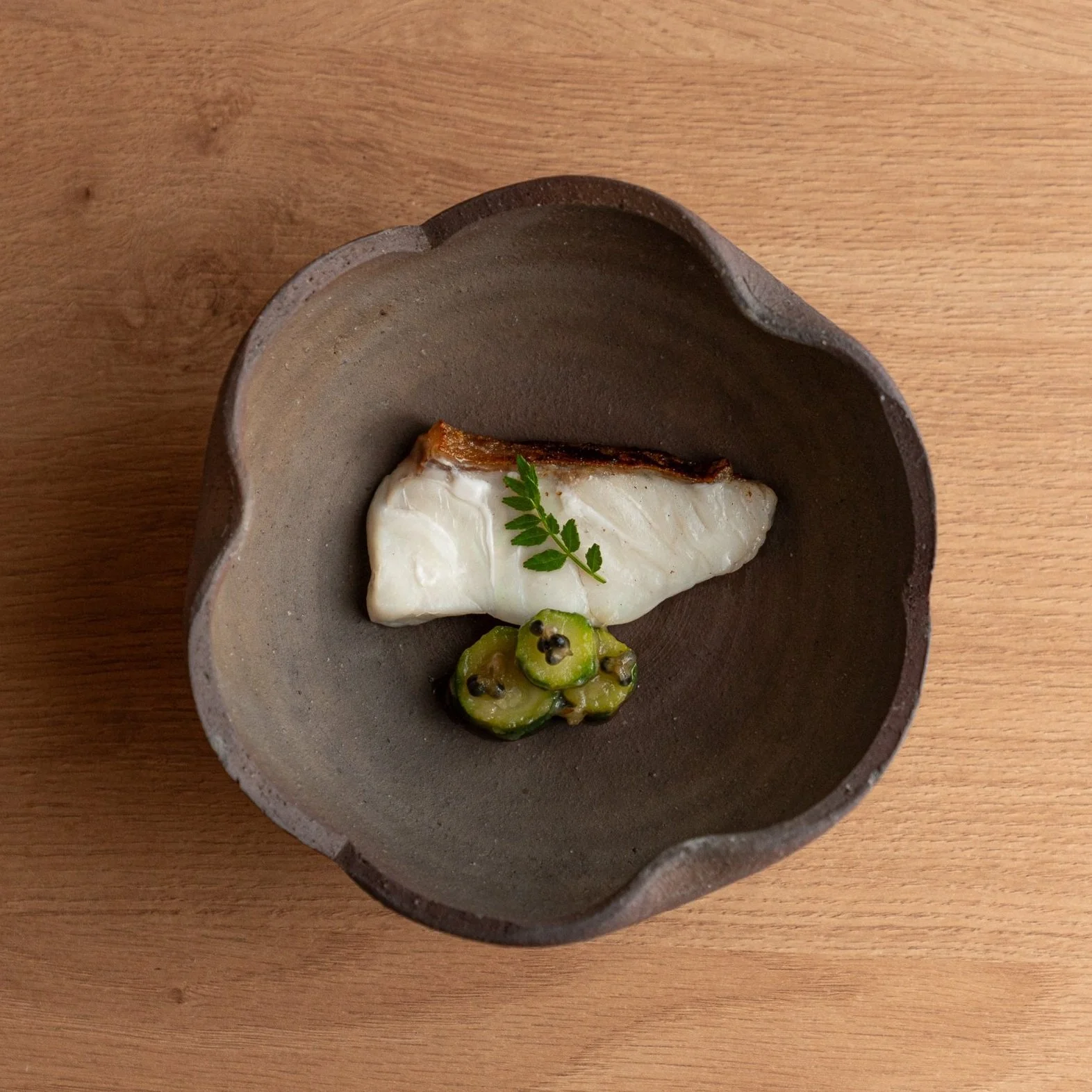The Art of Plating at TAKU
At TAKU, each dish is a performance of quiet discipline. Plating is not just visual—it’s emotional, philosophical, and rooted in tradition. It reflects the deep respect we hold for our ingredients, the guest, and the act of dining itself.
Minimalism with Purpose
True to the principles of Japanese aesthetics, plating at TAKU favours restraint. The minimalist approach is not about doing less for ease—it’s about removing the unnecessary so that what remains is intentional. Each garnish, brush of sauce, or placement of fish is deliberate.
We use garnishes sparingly, and always with purpose. You’ll often see accents such as sudachi zest, which is commonly mistaken for lime due to its citrusy aroma and green hue. Unlike lime, sudachi has a sharper, more aromatic flavour, offering a bright note that cuts through the richness of fatty fish like otoro. We also use finely grated ginger—carefully prepared to avoid any fibrous texture—chive paste, and micro-herbs, all chosen to complement the flavour and appearance of the dish.
Harmony Between Plate and Ingredient
The plate itself plays a vital role. At TAKU, we source handcrafted ceramicware from Japan as well as selected French ceramics such as JL Coquet, chosen for their clean lines and refined elegance. Each dish is paired with a specific vessel that enhances not just the visual impact, but also the overall experience.
As we explained in our blog, ‘The Art of Tableware,’ the height, curvature, and texture of a plate can dramatically affect how a dish feels. A deep bowl might cradle a brothy element or draw attention to a central ingredient, while wide flatware allows for spatial play and clean lines. We use this as a tool to create contrast, rhythm, and flow on the plate.
Technique Meets Intuition
Plating is taught and practiced—but it’s also felt. Our chefs learn through repetition, understanding how the angle of a fish slice or the placement of a dot of sauce can change the mood of a dish. That same training underpins our knife work.
This interplay between refined technique and creative intuition ensures that every course feels distinct but connected. The visual rhythm of the Omakase meal builds from dish to dish, creating a sense of progression and story.
Expressing Hospitality Visually
In Japanese cuisine, hospitality—omotenashi—is expressed not only through service, but also in how the food is prepared and presented. At TAKU, plating is our silent greeting to the guest. It’s how we say: this dish was made for you, in this moment.
The composed visuals invite the diner to pause, notice the craftsmanship, and take their time. For many of our guests, the presentation becomes part of the memory—something they recall long after the meal ends.
A Final Note
Plating is the final touch, but it represents everything that came before: the sourcing of ingredients, the training of the team, the harmony of tools, and the values that define our kitchen. It is not a flourish, but a philosophy.
Every detail at TAKU tells a story—from the handmade plate to the way each element is arranged. Book your Omakase experience in Mayfair and discover the visual beauty of discipline in Japanese fine dining
